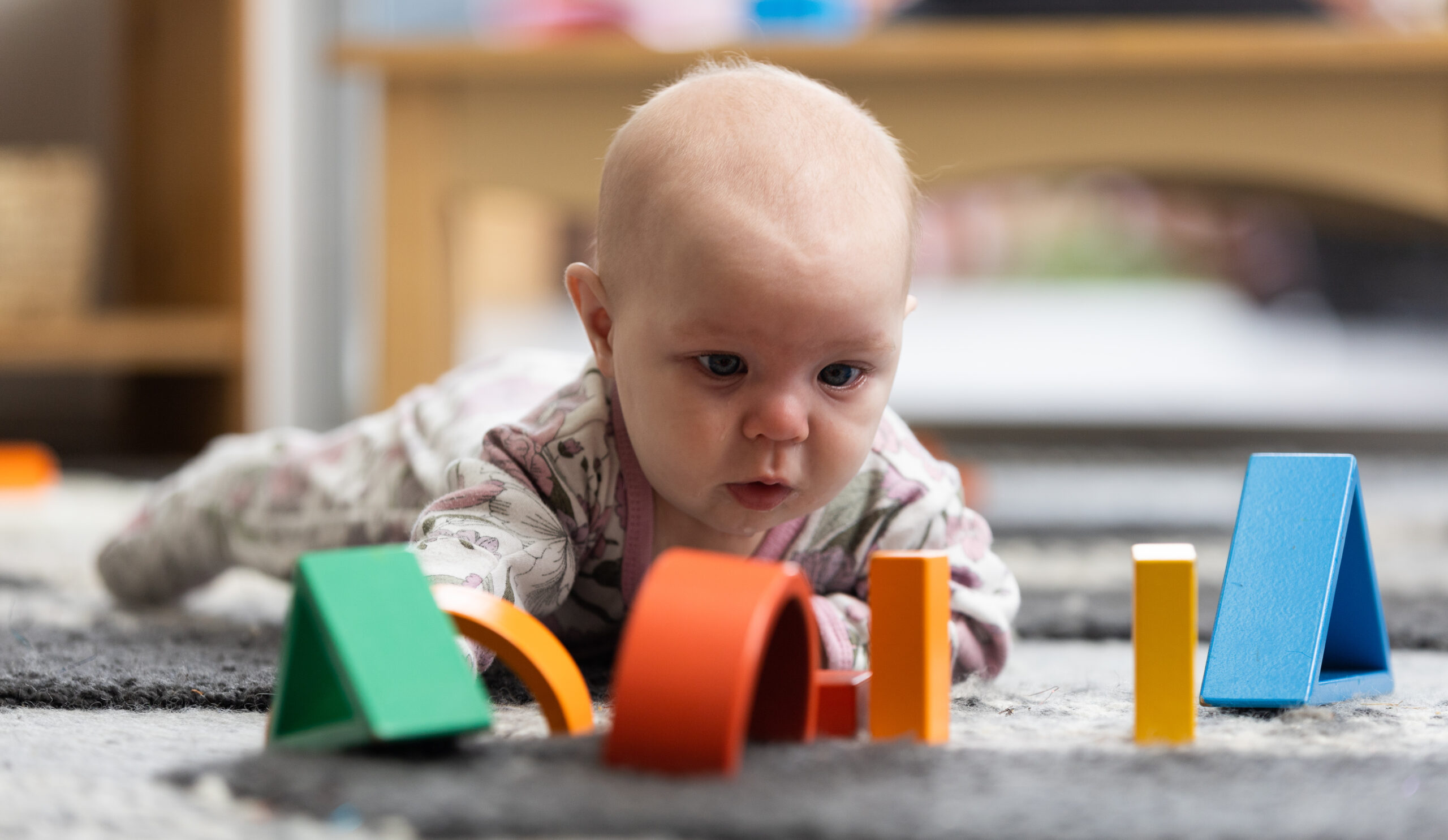
Learning is amplified when infants feel safe, secure and loved as they gain confidence to explore their world and connect with other people. Through relationships, children learn how to think, understand, express emotions and develop social skills. They receive important information about the world as they exchange a cry with a cuddle, a laugh with a smile, and a question with an answer from others.
Lifelong Learning Curriculum Healthy Beginnings Program
Grasping onto this well-researched, relational pedagogy, our Healthy Beginnings program places its focus on building secure attachment with infants, viewing relationships as the foundation to construct learning. The program recognises parents and other family members are a child’s first and most important teachers. Healthy Beginning educators, therefore, are committed to form partnership and collaborate with the child’s family from the very start of your Early Education journey. Here are the things our educators do to support you infant’s learning through a relationship-based approach:
- Collect information and learn about your child’s likes and dislikes through Stay & Play – the enrolment and orientation process
- Have system and documentation in place to ensure your child’s care routine is carried out responsively and reviewed regularly
- Keep you informed about your child’s learning regularly using different methods of communication
- Evaluate your child’s learning and development using formal assessment tool, Lifelong Learning Progress Record
- Collaborate with you to reflect on your child’s progression in different developmental areas and develop goals based on the Progress Record
- Plan and engage in play-based learning to form positive relationship, empowering your child to learn and explore in different learning zones of the Healthy Beginning Curriculum
As your child’s FIRST teacher, here are things you can do to amplify learning outcomes for your child at our Lifelong Learning Centre:
- Share stories about your child with our educators via emails or the Storypark app. This will allow educators to plan accordingly to your child’s interest, strengths and needs
- Talk to our educators about any important issues and/or attend parent-educator meetings. This may include any changes in care routines and rituals.
- Stay informed with your child’s learning on Storypark, input and feedback on the program regularly
- Review your child’s Progress Record and develop goals with the educators to ensure your child is progressing in different areas of development
What is a Lifelong Learning Progress Record?
The Lifelong Learning Progress Record is an assessment tool to evaluate children’s learning, development and wellbeing. Through loving, nurturing and responsive relationships, our Healthy Beginnings Educators work in collaboration with families to formulate learning goals for each child based on the Learning Outcomes from the Nationally Approved Framework and key developmental milestones for infants in the first year.
To learn more about some key language and cognitive milestones for infants in the first year, click here! ‘Improving Language and Thinking Skills in Infants; A Data Informed Approach’
Some common goals under the Four Lifelong Learning Areas are listed below:
| Physical Health and Wellbeing | Rolling, crawling, raising self to a sitting position, pull-to-stand, cruising along low furniture, standing independently and walking reaches out and grasps toy, transfers objects from hand to hand, uses hand to self feed, and beginning to manipulate utensil to feed self. |
| Emotional Confidence | Feels safe to explore and play, and knows who to return for assurance and interaction Confidently shares and expresses different emotions, i.e laugh and smile, cry and whimper |
| Social Connectivity | Responds to own name being called, family names and familiar objects Enjoys rhymes and songs, imitates actions and sounds (clapping, pointing and babbling tunefully) |
| Foundational Learning | Enjoys games such as peek-a-boo and pat-a-cake Shows interest in picture books Explores objects by looking at and mouthing them, begins to coordinate looking, hearing and touching |
